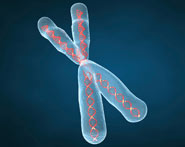


 النبات
النبات
 الحيوان
الحيوان
 الأحياء المجهرية
الأحياء المجهرية
 علم الأمراض
علم الأمراض
 التقانة الإحيائية
التقانة الإحيائية
 التقنية الحيوية المكروبية
التقنية الحيوية المكروبية
 التقنية الحياتية النانوية
التقنية الحياتية النانوية
 علم الأجنة
علم الأجنة
 الأحياء الجزيئي
الأحياء الجزيئي
 علم وظائف الأعضاء
علم وظائف الأعضاء
 الغدد
الغدد
 المضادات الحيوية
المضادات الحيوية|
Read More
Date: 2025-02-17
Date: 2025-02-04
Date: 2025-02-03
|
Squamous papilloma
• Benign exophytic proliferation of squamous epithelium.
• Most occur in adults aged 30– 50 y.
• the exact aetiology is unknown but the role of human papilloma virus strains 6 and 11 has been implicated in its causation.
• predilection for hard and soft palates and the uvula. • histology shows papillary fronds lined by squamous epithelium.
• prognosis is excellent. do not undergo malignant transformation.
Fibroepithelial polyp
• Benign proliferation of fibrous tissue in response to irritation/ trauma.
• presents as a painless oral lump in an adult aged 30– 50 y.
• histology shows a subepithelial mass of dense collagenous tissue.
• prognosis is excellent with no inherent tendency to recur.
Peripheral ossifying fibroma
• asymptomatic, slow- growing, pale- pink firm growth of the gingiva.
• Seen mostly in young adult females.
• probably arises from the periodontal ligament due to chronic irritation.
• histology shows randomly dispersed foci of bone, cementum- like material, and dystrophic calcification in a fibroblastic stroma.
• prognosis is excellent. recurrence rate of ~15% if incomplete removal.
Peripheral giant cell granuloma
• painless, well circumscribed, reddish- purple mass on the gingiva, anterior to the molar teeth (mandible > maxilla). Female 30– 50 years of age.
• thought to arise from the periodontal ligament space and the giant cells are of odontoclastic origin.
• histology shows multiple multinucleated giant cells in a vascularized f ibroblastic stroma with haemorrhage and haemosiderin.
• prognosis is excellent. recurrence rate of ~15% if incomplete removal.
Pyogenic granuloma
• Benign vascular lesion, also known as ‘lobular capillary haemangioma’.
• presents as a dark red polypoid mass which often ulcerates.
• histology shows a lobulated proliferation of small blood vessels.
Mucocele
• Caused by blockage or rupture of a salivary gland duct.
• presents as a fluctuant lesion, most commonly on the lower lip.
• histology shows a cystic space filled with mucin and lined by inflammatory tissue.
Amalgam tattoo
• an exogenous pigment associated discoloration of the oral mucosa, composed of granules of silver amalgam used in the filling of dental cavities.
• appears as a grey- black macule of few millimetres in size
• Commonly located on the alveolar ridge, interdental papillae, alveolar mucosa, floor of the mouth, and the vestibule.
• histology shows large amounts of dark metal or brown pigment often coursing along reticulin fibres in the connective tissue especially around blood vessels.
• prognosis is excellent. there is little to no response by the host tissue to the embedded silver amalgam.



|
|
|
|
للعاملين في الليل.. حيلة صحية تجنبكم خطر هذا النوع من العمل
|
|
|
|
|
|
|
"ناسا" تحتفي برائد الفضاء السوفياتي يوري غاغارين
|
|
|
|
|
|
|
المجمع العلمي يقيم ورشة تطويرية ودورة قرآنية في النجف والديوانية
|
|
|